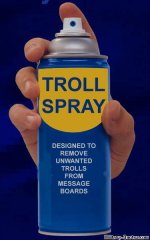That the L framed 586 and 686 models bear a striking resemblance to Colt's Python, is no coincidence.
It's been covered in thousands, yea tens of thousands of internet blogs, magazine articles, books, etc., that the S&W K frame had weaknesses when it came to shooting lightweight (i.e. 110gr-130gr) .357 Magnum loads. The litany of "shortcomings", premature throat erosion, end shake, flame cutting, are well-documented.
To correct this problem, the L frame was designed and came into production. It's similar in size to the Colt I frame, maybe a tad larger, and it certainly fits the bill for a durable magnum revolver; all the benefits (same grip frame size as the K, etc.), without any of the shortcomings. Surely a plus for S&W and the market.
As the result of what I'm sure were the discussions in smoke-filled rooms among accountants and other sordid finance types, (


) the decision was made to cheapen the apparent paragon of revolver evolution. Surely, an accountant who happened to read about MIM parts in the latest issue of "Financial Manager", knew better than metallurgists and engineers the need to switch to something other than forged steel. It didn't make a whit of difference that revolvers were struggling in a market now flooded with "Wonder Nines" with strange names such as "Grock", or "Glick", or whatever. How does one compete with the semiauto, especially with a gun concept founded in 1836?
By their very nature, revolvers are the most complex of both generally accepted types of handguns. And forged parts used to be part of an original casting process.
In the end, its about how much quality goes into the design, engineering and manufacturing process.
PS - I love my 686, 686-3, and my 586-4. Great revolvers, all. And I'm not giving up up my L frame look alikes, my three Pythons.




